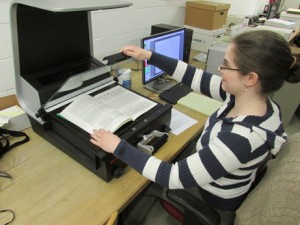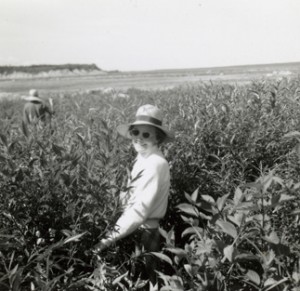
The following post was authored by Digital Archivist Paul Kelly.
As John Shepherd wrote in last week’s blog, the first few years of the 2000s saw Catholic University getting its digital feet wet in collaboration with other members of the Washington Research Library Consortium (WRLC). The products of that collaboration (since christened “Boutique Digital Collections”) are still amongst our most utilized online resources. The success of that project inspired the Archives to expand into a more fully realized digitization program, but it was not until 2014 that the will and resources coalesced to allow us to move forward.
In spring of last year, Catholic received delivery of a Zeutschel scanner from WRLC. Built for high speed scanning, shared between all member institutions, and circulated based on need, this scanner allowed us to pilot in-house digitization on a mass scale. Over a three month period, the Archives completed digitization of the Young Catholic Messenger, Iturbide-Kearney Family, and O’Donovan Rossa collections, as well as partial scanning of the NCWC Bulletin/Catholic Action periodical. By the time the Zeutschel left us, we had not only created 37,000 digital objects and associated metadata records, but also proven that we had the expertise and desire to incorporate manuscript digitization into our everyday workflow.

We were ready for more, and by September of 2014, the Archives had invested in a Zeutschel of its own, and hired a Digital Archivist (hello there!). Within weeks, due to preservation concerns and extreme researcher interest, we began digitizing the ethnographic field notes of John Montgomery Cooper and Regina Flannery Herzfeld. This material is of particular note due to both its subject matter and format; in short, the collection is comprised of 58,000 pencil-written notecards describing the traditions, culture, language, and territory of the James Bay Cree (see hand-drawn map of James Bay at mouth of Nottaway River). This project allowed us to tackle two problems at once; since the collection had only a basic inventory, we created brand new folder-level metadata not only to accompany the digital objects, but also to populate a finding aid for the collection. Both will go online later this summer.
Where does our program stand now? We wrapped the 154 hour Cooper-Herzfeld project in March, and immediately resumed the in-progress Catholic Action project, which is now on the cusp of completion. Since nothing is more exciting to us than having our content grace your eyeballs, we plan to reveal the next collections in line for digitization in the very near future. Keep ‘em peeled, folks.

2 thoughts on “The Archivist’s Nook: Digitization – The Revenge”
Comments are closed.